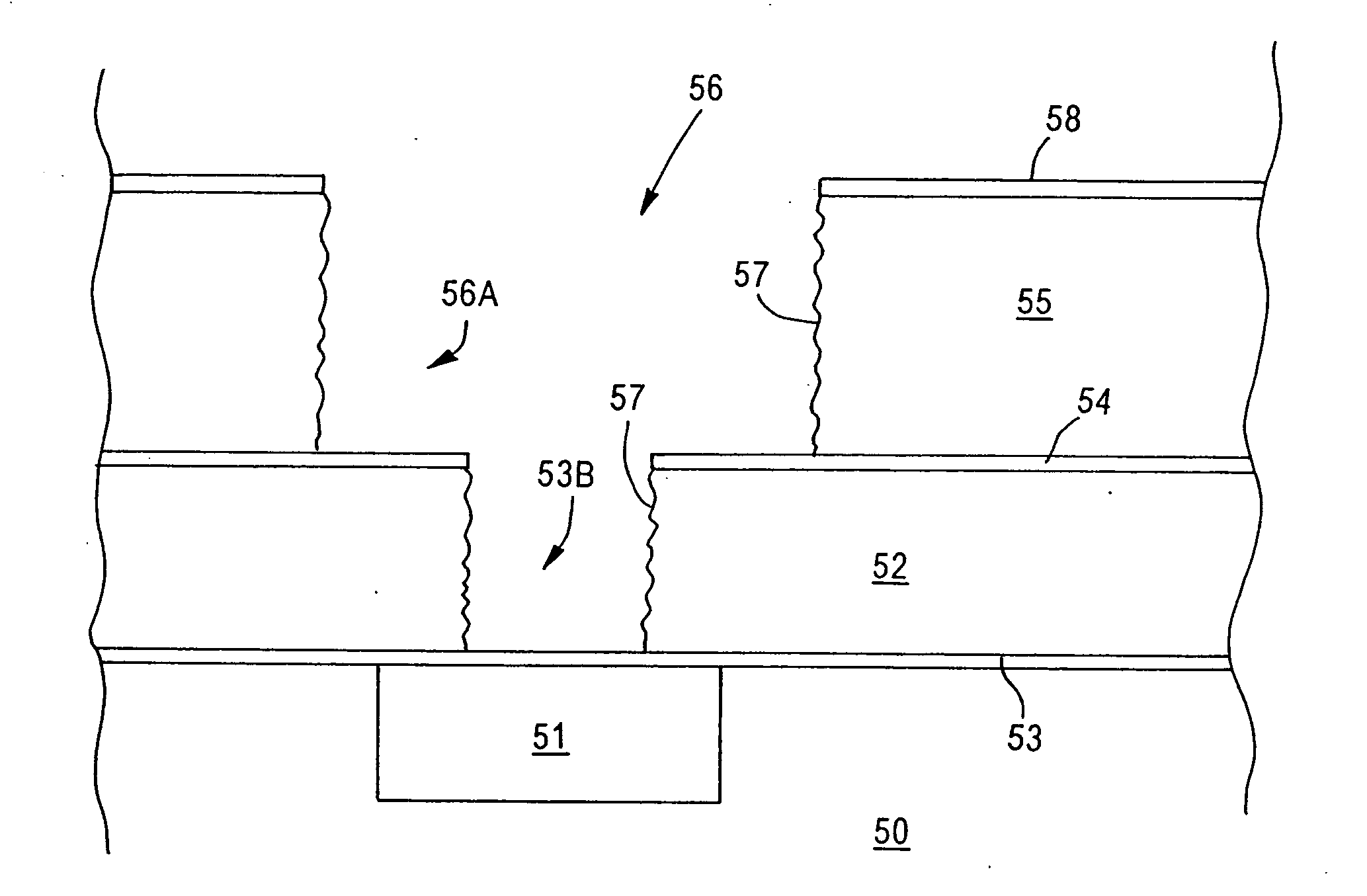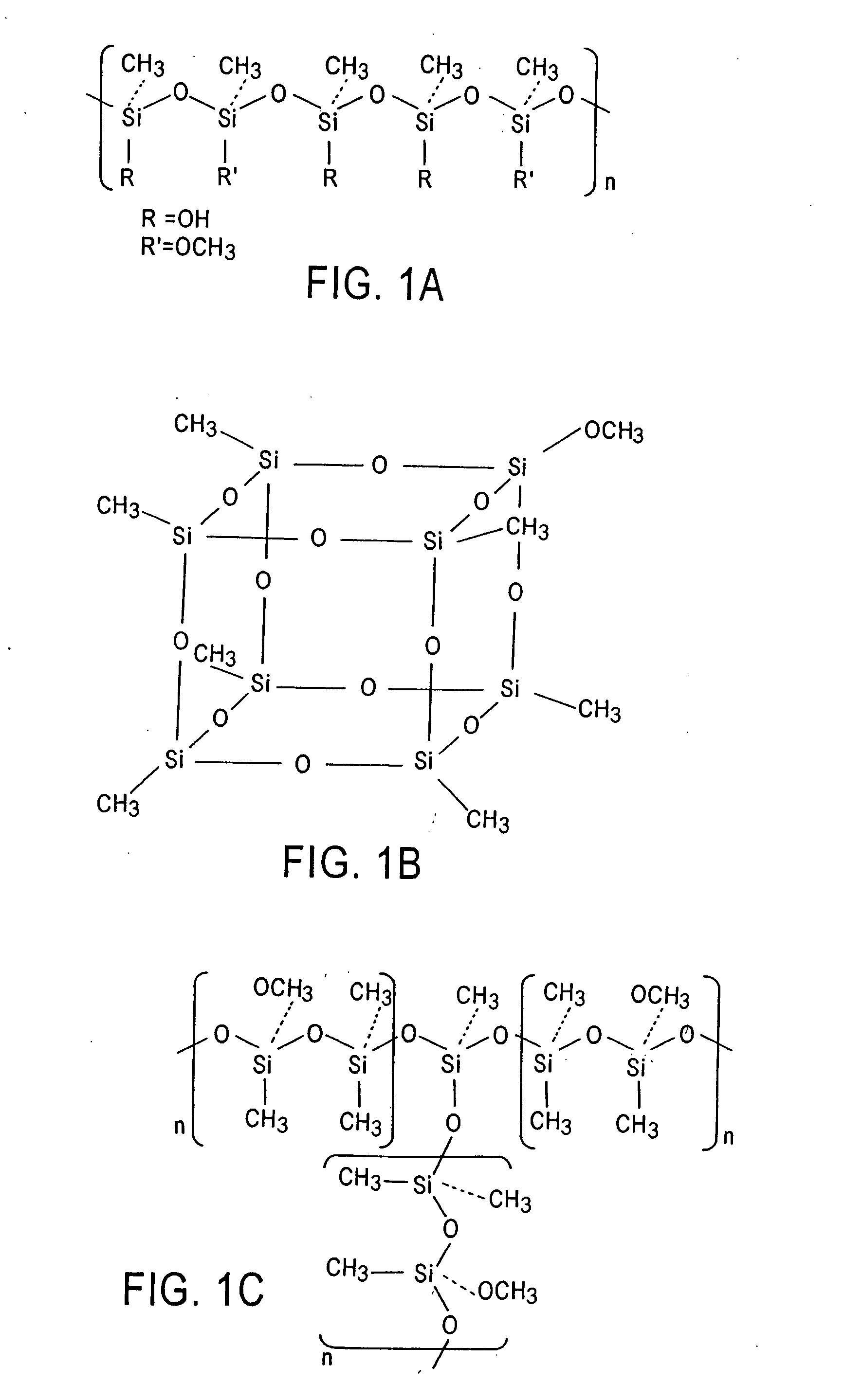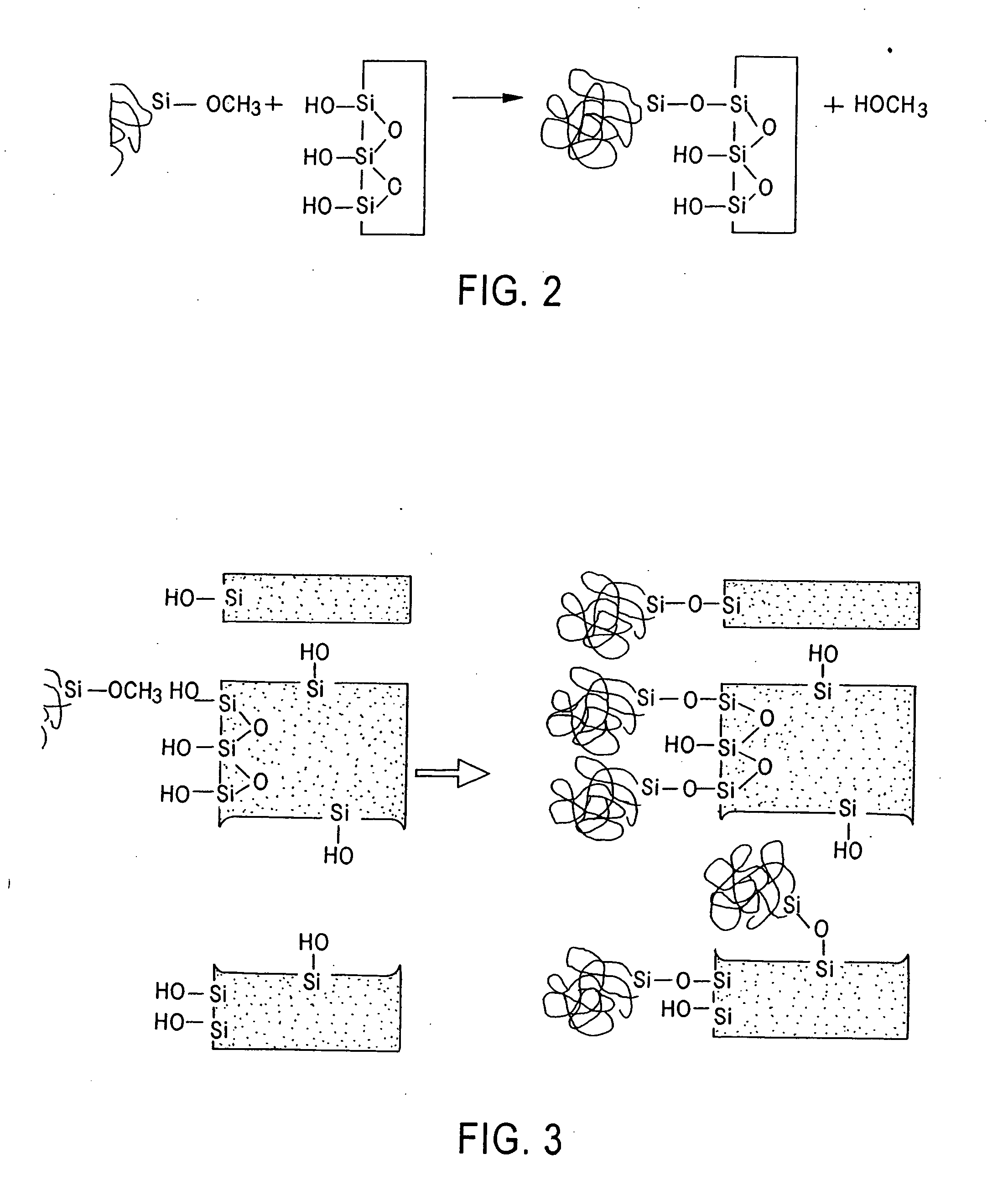Interconnects with a dielectric sealant layer
a dielectric sealant and interconnect technology, applied in semiconductor devices, semiconductor/solid-state device details, electrical apparatus, etc., can solve the problems of reducing the performance limiting the fabrication of the integrated circuit, and the rejection rate due to the speed delay of the integrated circuit in the sub-micron regime has become a limiting factor, so as to reduce the parasitic rxc time delay, and reduce the conductive feature
- Summary
- Abstract
- Description
- Claims
- Application Information
AI Technical Summary
Benefits of technology
Problems solved by technology
Method used
Image
Examples
Embodiment Construction
[0021] The present invention addresses the problem of barrier metal and / or barrier metal precursor penetration through sidewalls and into a low-k material during damascene processing, particularly porous low-k material. It was found that during CVD and ALD deposition of a thin conformal barrier metal layer, such as Ta and / or TaN, prior to the filling damascene openings with Cu or a Cu alloy, the barrier metal and / or precursor penetrated through the sidewalls of the low-k dielectric layer. Such penetration was particularly acute in implementing damascene processing employing porous low-k materials, such as porous low-k dielectric material having a dielectric constant (k) less than about 2.5. Such penetration into the low-k material causes leakage and capacitance degradation. This problem is not confined to porous low-k material, but may also occur with non-porous low-k material by diffusion of the barrier metal and / or barrier metal precursor through the exposed sidewalls into the low...
PUM
| Property | Measurement | Unit |
|---|---|---|
| porosity | aaaaa | aaaaa |
| dielectric constant | aaaaa | aaaaa |
| temperatures | aaaaa | aaaaa |
Abstract
Description
Claims
Application Information
 Login to View More
Login to View More - R&D
- Intellectual Property
- Life Sciences
- Materials
- Tech Scout
- Unparalleled Data Quality
- Higher Quality Content
- 60% Fewer Hallucinations
Browse by: Latest US Patents, China's latest patents, Technical Efficacy Thesaurus, Application Domain, Technology Topic, Popular Technical Reports.
© 2025 PatSnap. All rights reserved.Legal|Privacy policy|Modern Slavery Act Transparency Statement|Sitemap|About US| Contact US: help@patsnap.com



